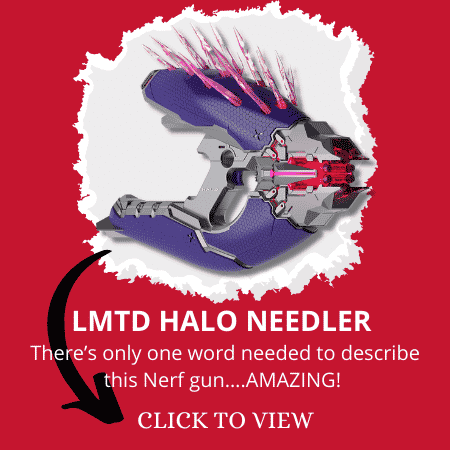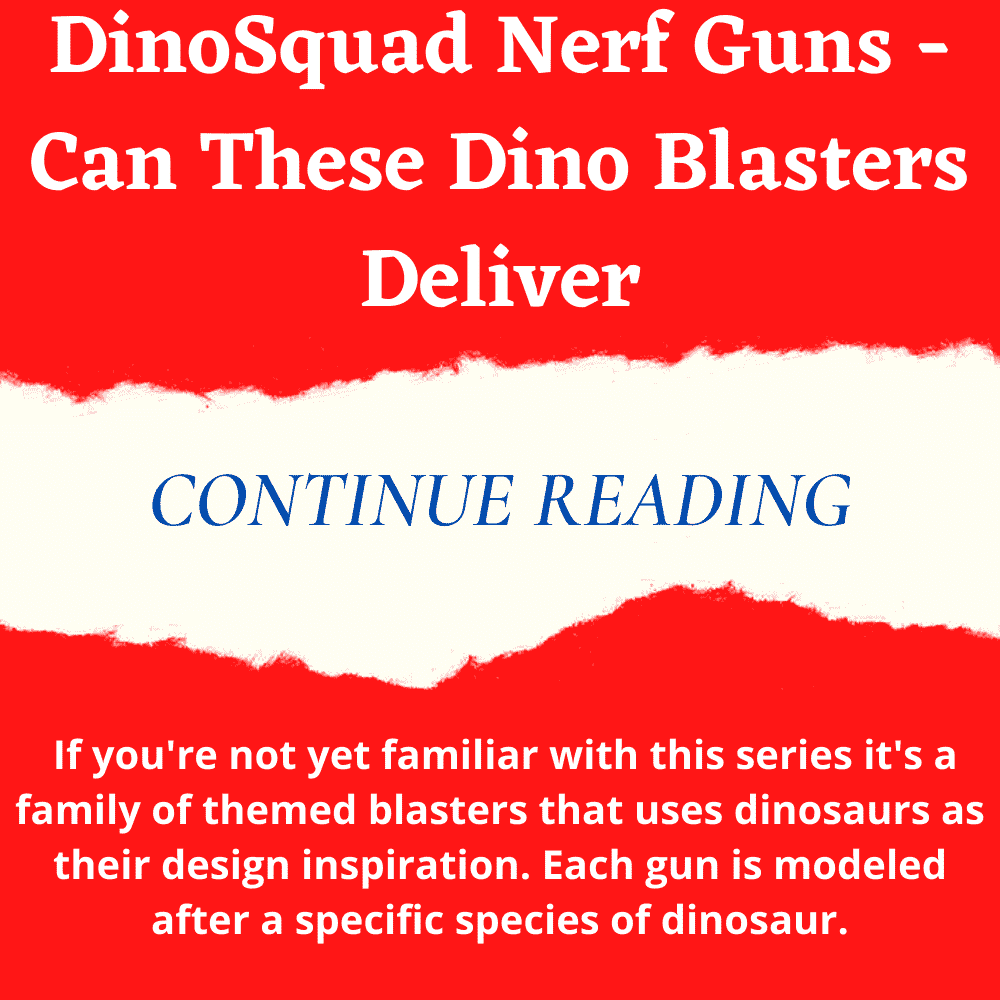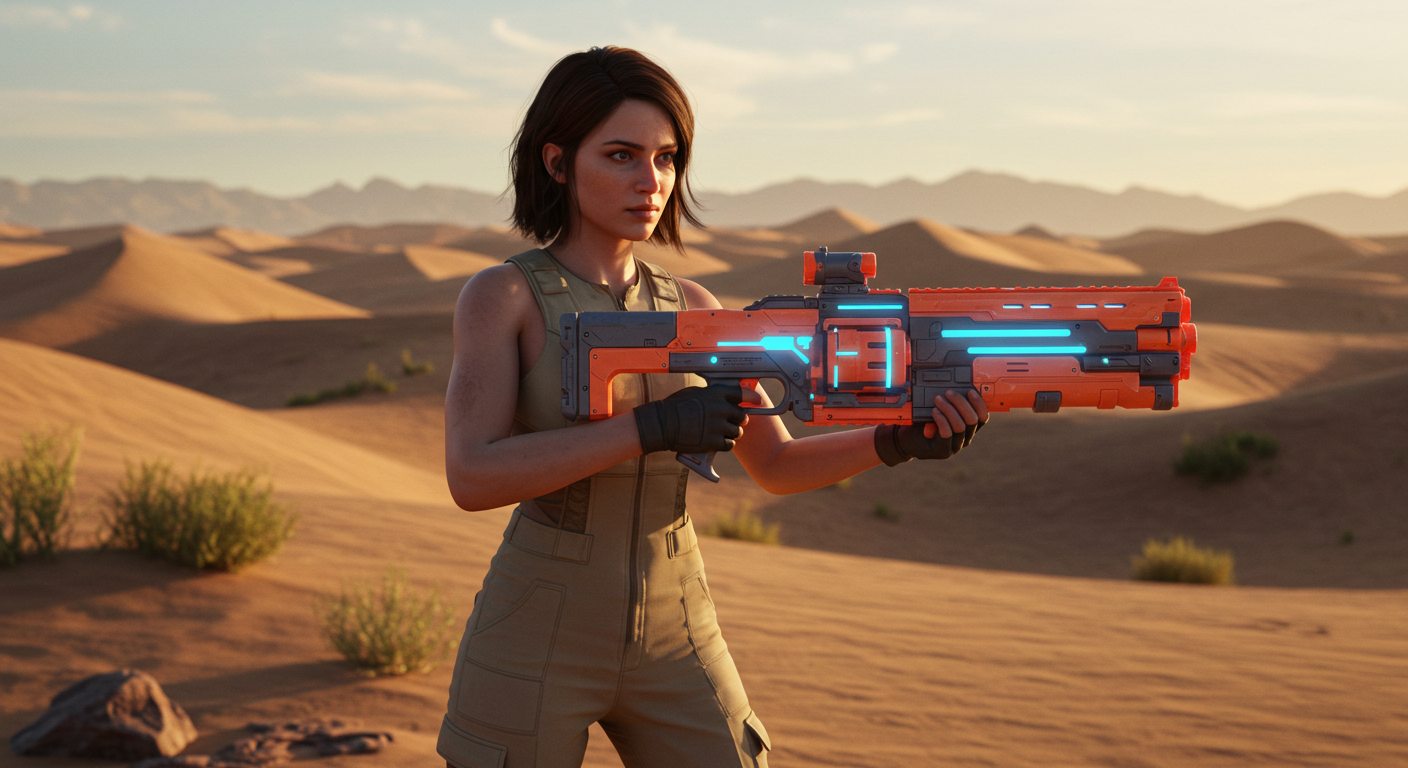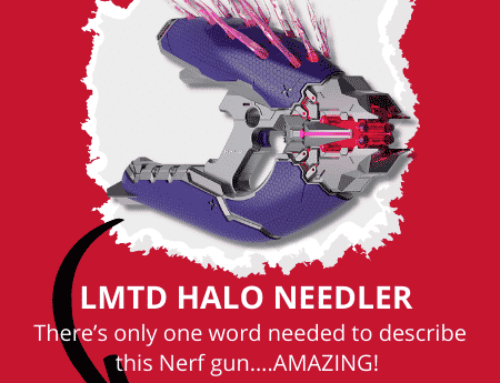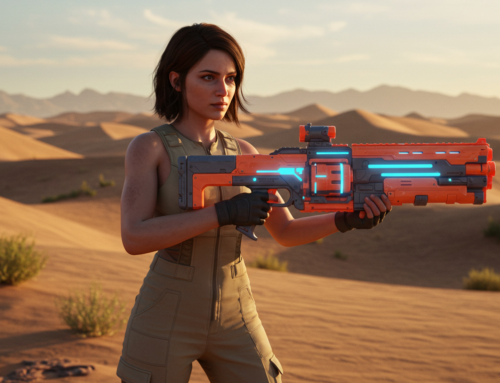INTRO TO THE EVOLUTION OF NERF GUNS
The evolution of Nerf guns has always been baked into the cake and is a pivotal part of Hasbro’s creative formula.
It seems to me that Nerf is in a very peculiar spot at the moment. With the recent release of the Hyper series which has left mixed reviews across the industry is now starting to see some of that hype fizzle out (we will circle back to this shortly). This leaves me asking what I think is a pretty important question concerning the future of Nerf. Where do we go from here?
As we stand at the fork of the road, two options become visibly clear. Move forward with the status quo or a real attempt at fixing some truly noticeable design flaws. Keep in mind that I remain very optimistic and my goal here is not to add insult to injury. I simply saw some opportunities and felt compelled to write.
Before we go any further though I would like to comment on the obvious. No, I don’t feel that the Nerf brand is in any danger of imploding. This is just an educated look into some of the improvements that could prove very profitable to the industry.
EVOLUTION OF NERF GUNS FROM RIVAL TO HYPER
The release of the Rival series was a pivotal point in the history timeline. It signaled that it was time for change. A well needed change. An attempt was made at this before with the Vortex series (disc blasters), laser tag and super soakers but nothing was able to fill that “step forward” void like the Rival blasters. We were finally on a solid path to a new style of play. Or so it seemed.
From here we had a couple sub-series released to satisfy some cosmetic cravings by the consumer but very little change to the existing lineup. That was until Hyper dropped onto the scene and changed things a bit. This new series brought with it some new design features that on the surface sounded like positive changes but at their core fell short of expectations.
This leaves me wondering if Hasbro really understands that there’s a rare opportunity here to take Nerf in an entirely new direction. One that I believe could open the door to a world of possibilities. Could the future of Nerf hinge on the success of the Hyper ball style blasters? Only time can answer that question however my views are strong that it does.
Shop Talk About Some Design Opportunities
The Rival/Hyper style of blasters are lacking functionality in a couple of key areas that if addressed could be a game changer. There are 3 areas I would like to touch on. The battery situation. The hopper situation and the loading and reloading situation.
EVOLVING NERF GUN BATTERIES HAVE A PRACTICAL USE
If there was ever a topic where Hasbro could score some points with the consumer it would be on the topic of batteries. Especially for the larger guns that require multiple C or D batteries.
An ideal scenario would be to design a rechargeable battery pack that will universally fit into all blasters going forward. Smaller packs can be designed for handguns and larger packs for sub-compact blasters and larger. It would only take a handful of variations and all the consumer would need to know is what the battery pack “ID” is in order to purchase a replacement.
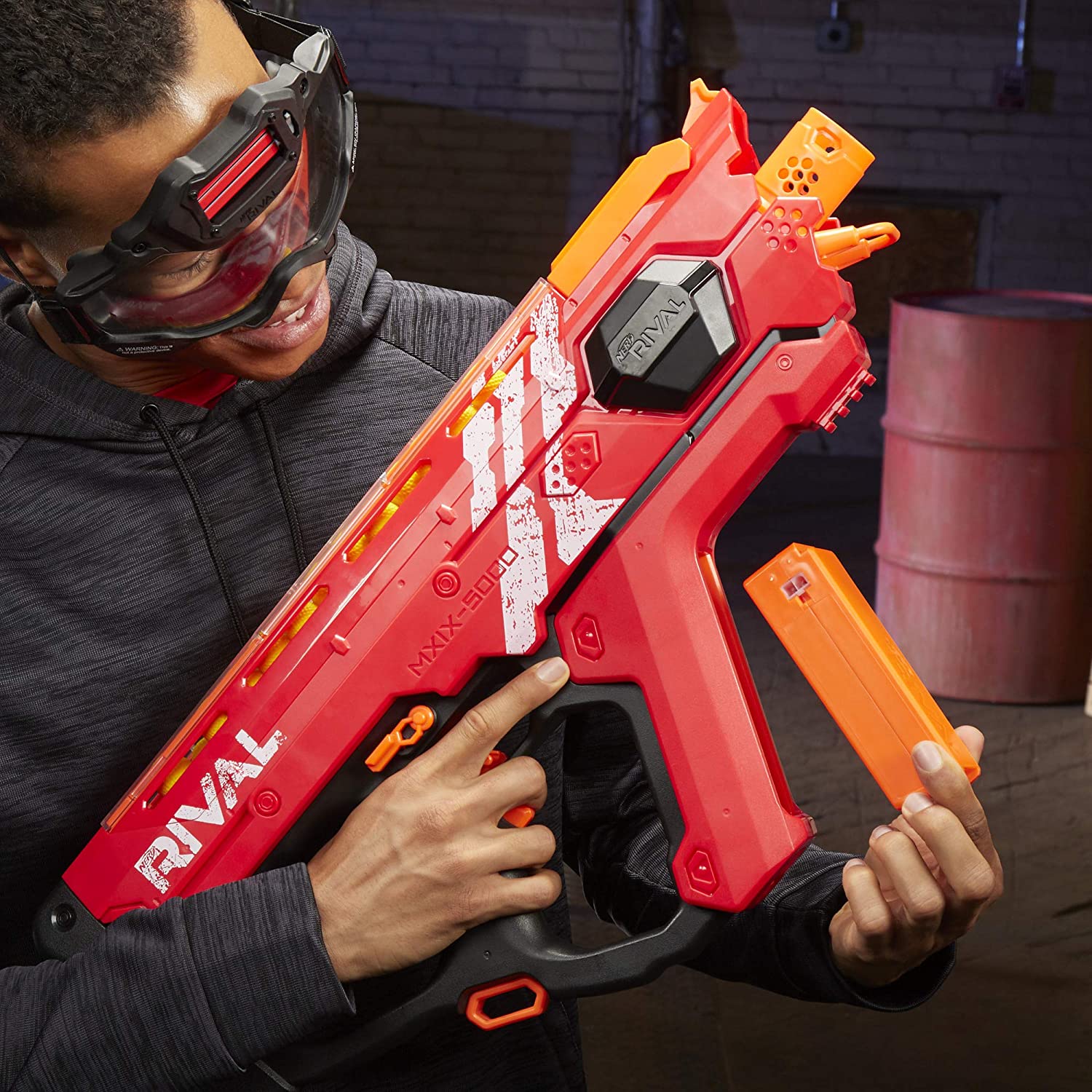
The Nerf Rival Rechargeable Battery Pack
The rechargeable battery pack that’s used in the Perses is a great starting point. Rival or Hyper blasters make good candidates for this due to their already elevated retail price. Not much can be done to existing blasters but as for new releases the outcome could be different. Battery packs offer a wide range of benefits including time and money savings on both ends and the option to be sold as an accessory. Everyone is a winner!
THE EVOLUTION OF NERF GUN FEED SYSTEMS INTO HOPPERS
Here we have a two fold issue. Efficient and effective loading/reloading and how the blaster feeds ammo. Both will need to be addressed if we’re going to have any certainty of progress.
The Feeding Issues
Full disclosure. I’ve been around long enough to witness the entire evolution of paintball hoppers from basic gravity fed to light sensor agitation hoppers to the modern force fed hoppers of today. Am I a design engineer? No. Does this make me a subject matter expert? I hope not, but it did give me a deep understanding of the struggle behind feeding issues of little round balls into a gun. Can’t argue with that logic right?
With this in mind it’s easy to see that Hasbro has some work to do and with the technology already around there’s really little excuse as to why we’re experiencing so many issues with the Hyper series. Until this is properly addressed the Rival/Hyper series and any future series that replicates them are doomed to the same design flaws.
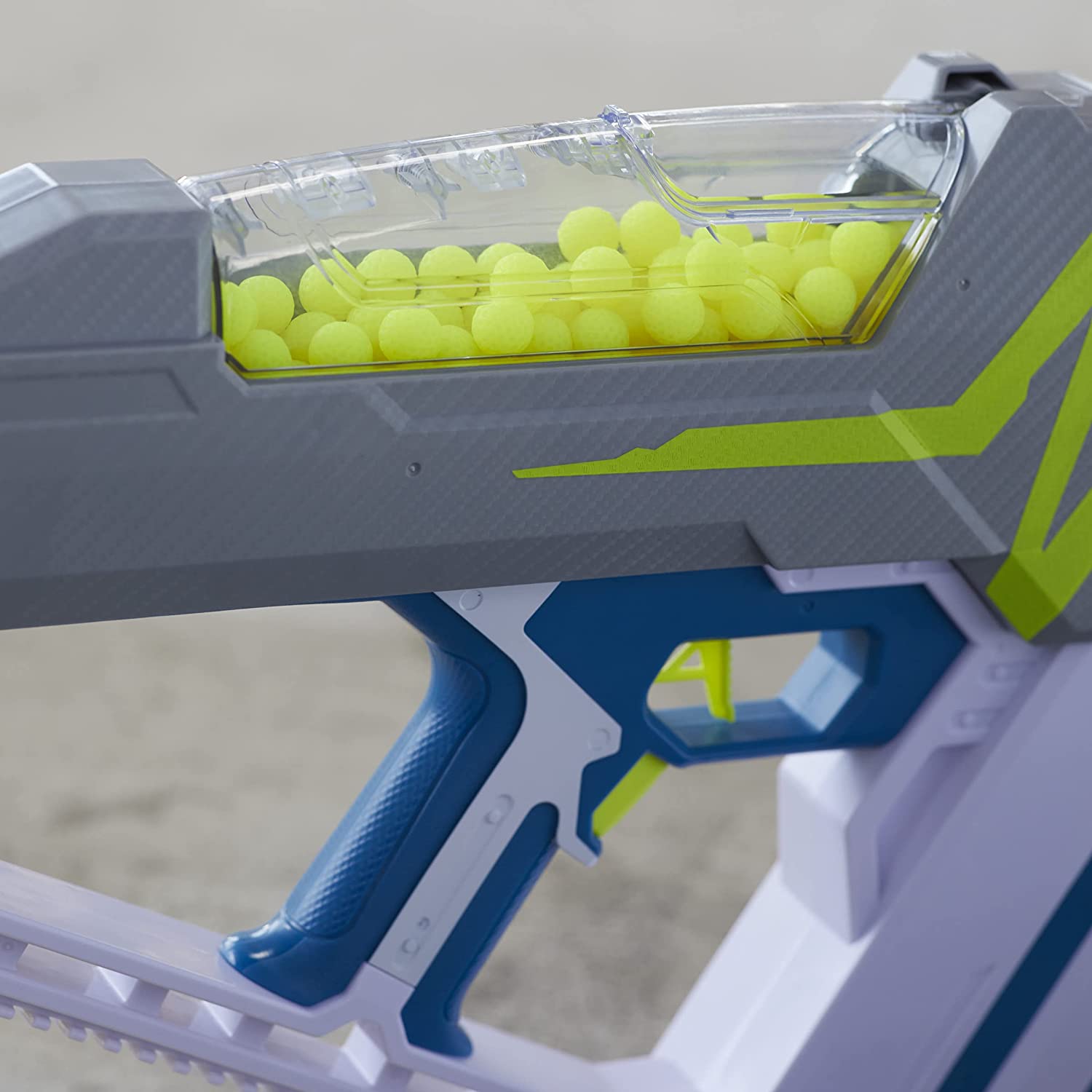
There are a number of design options that could be entertained that are far more efficient and effective. Anything short of turning the blaster upside down should result in a fairly consistent misfire rate. You should not have to repeatedly shake the blaster to feed the gun. Even some of the outdated paintball loaders have a faster feed rate to misfire ratio. Modern paintball guns don’t misfire but you understand the point.
In summary I’m not sure what the answer is but I do know that it’s there. Lurking in the shadows and if Hasbro continues to release guns with similar feeding designs it might find itself running into issues down the road.
THE CHALLENGES WITH RELOADING THESE NERF GUNS
To narrow things down to a more specific focal point. My concerns about loading/reloading for this article is primarily centered around hopper fed blasters. This is where I see a lot of inconsistency. We did see some improvements with the Hyper series but again Hasbro didn’t really “nail it”. However it was a nice step forward from how the Rival Perses or Nemesis is loaded.
Flip forward doors are ideal for reloading and placing them as far back on the blaster as possible would also add some value. This would allow you to drop the gun forward in a barrel down position while reloading. It puts the blaster in a clean ergonomic position and allows gravity to work more effectively. It also keeps the flip door from accidentally closing on you while reloading. As an added perk the door also acts like a backboard for runaway ammo.
When the gun is sitting horizontal the balls are poured in and have to fall to either side. Think of filling a cylinder tube from the top center of the tube. Now fill the same cylinder tube from one side while the tube is pointed downwards. The second example is a more effective approach to filling the tube efficiently.
The idea here is to challenge the status quo and suggest ideas for improvement.
Imagine for a moment a Nerf blaster similar to the Mach-100 that shoots 8 balls per second (bps) like the Perses but has a feed system that doesn’t require you to shake the blaster vigorously to avoid misfiring. Couple that with an efficient reloading process and you got yourself the start of something good.
Reloading The Perses
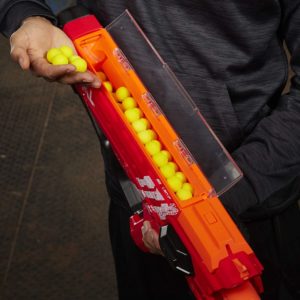
Reloading The Mach-100
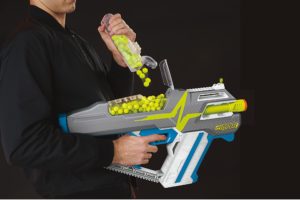
Lets Wrap This Up
In summary there’s a world of opportunity for improvement to the hopper-fed system going forward. Let’s hope Hasbro learns from their design flaws and reallocates more of the R&D budget to this area. I would say this is the most pressing issue we will discuss.
So what does the future hold? The answer is still unclear but given the status quote I’m fairly confident it’ll be a bright one. Considering Nerf takes a serious approach to to what’s been discussed


